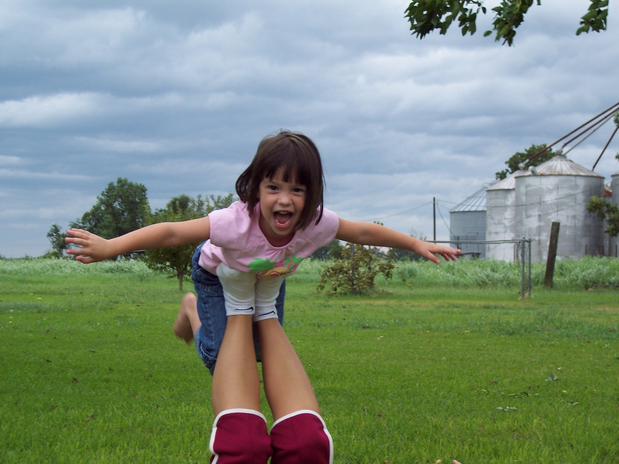What is your Inner Child?
The concept of an inner child was first mentioned by psychologist Carl Jung after he looked at the relationship between past experiences and emotions.
Basically, your inner child is the part of you that is “stuck” in adolescence due to childhood trauma. You may find that your inner child is the part of you that is hypersensitive, weary and distrustful around others, overactive when it comes to expressing/experiencing emotions, immature and lacking when it comes to decision making, at times.
Healing your inner child will allow you to move on from your past trauma in a healthy manner. Those who heal their inner child may find that they are able to handle traumatic events more effectively via the development of healthy coping mechanisms. Healthy coping mechanisms are distinguished from unhealthy coping mechanisms, because unlike unhealthy coping mechanisms, they are not harmful to the individual or to others. Unhealthy coping mechanisms can inflict physical, mental, emotional or verbal harm onto another person depending on the circumstance. Examples include: any form of self-harm or abuse (physical), scare tactics meant to intimidate another person (mental), restrictive emotions (emotional) and threats (verbal).
Ways in Which your Inner Child has been Hurt
- Loss of a parent/guardian
- Physical, psychological, sexual, or emotional abuse or neglect
- Bullying
- Witnessing or being a victim of domestic violence
- Substance abuse in the household
- Physical/Mental illness of a family member
- Growing up in harsh conditions i.e. poverty, abusive household
- Feeling isolated from family members
Any event that may have been considered traumatic to you as a child has the possibility to inflict wounds on your inner child. This can be as simple as getting yelled at and punished for reasons that you didn’t fully understand to becoming a caregiver for a dying family member.
How the Damage Affects you Later in Life
Childhood trauma can be attributed to the following due to the lack of guidance when it comes to regulating emotions, acting from logic and reason, expressing oneself in an appropriate manner, and forming healthy relationships. You may notice that you have/tend to:
- Repressed emotions
- Put off your own emotional needs
- Shun emotional closeness or intimacy
- Deep-seated feelings of anger/violence
- The inability to love yourself
- Psychological/physical illnesses
- Lack of respect for others
- Problems with sustaining a healthy relationship
How to Heal your Inner child
- Acknowledge your Inner Child. Acknowledge that you were once a child that had experienced no trauma, acknowledge that time in your life and what purpose it served you.
- Validate what happened. Discuss or write out what you can remember from your childhood. Do not write it from the perspective of a mature individual, but rather from the perspective of a child. Ask yourself, if I was given the opportunity to discuss my trauma as it occurred how would I have described my experience to them?
- Identify the form(s) of trauma that you experienced. After you have written down your account of what happened, analyze it. What can you, as a matured individual, identify from your experiences? Were there instances of child abuse or neglect? Did your parents/guardians or family members have narcissistic tendencies? Were you expected to bare your parents childhood trauma, thus leading to your own trauma? Etc.
- Embrace your emotions. Without judgement, allow yourself to feel your emotions. As a child, you were not able to process such complex emotions. You were forced to take on the weight of trauma onto your little shoulders, when you should have only been concerned with being a kid. Your only worries should have been being first on the swings and what to draw in art class. So put yourself into the shoes of little you and let yourself feel the emotions you were feeling, using the ability to process emotions that you have now. But, do not let yourself be consumed by those emotions. Simply feel them, acknowledge them and release them.
- Identify current patterns stemming from past traumas. Ask yourself tough questions in order to identify the mechanisms you adopted as you picked up more trauma along the way to adulthood. Analyze the way you express your emotions, your pet peeves, what sets you off, your level of patience, how you respond to rejection, how you form relationships or how you steer clear of relationships, etc. Every behavior you exhibit can be the result of or stem from a trauma response.
- Take steps to correct those patterns. Reflect on how you feel, how you make others feel, how you want to be seen and heard, the person you wish to become and decide what you need to do to break those patterns. Dismantle each coping mechanism one at a time. For example if you have a tendency to lash out on others for the tiniest thing, ask yourself why your inner child chooses to respond to stress with anger and research ways you can combat that. Remember healing your inner child doesn’t have to be solely your responsibility, you can reach out to others for help as well.
- Release those ill feelings/patterns. As mentioned previously it is important not to hold onto any ill feelings that you will feel during this process. You may want to hold onto the bits and pieces of your childhood that you can remember, you may feel the need to hold onto the time before you accrued all of your trauma however, this will only enable those patterns and harm you further.
Throughout this process it is important to tell yourself a few things:
“Your anger is the part of you that knows your mistreatment and abuse are unacceptable. Your anger knows you deserve to be treated well, and with kindness. Your anger is the part of you that loves you.”
“Close your eyes, imagine your younger self running up to you and hugging you. They hold no resentment towards you, they understand what you had to do in order to survive, they want to see you happy as you were before you experienced trauma and they love you.”
“It is okay to forgive yourself for what you felt you had to do in order to survive. But you don’t need to be in survival mode anymore. You are safe and you are worthy of healing.”
Sources:
https://lonerwolf.com/feeling-safe-inner-child/
https://cptsdfoundation.org/2020/07/13/the-wounded-inner-child/


